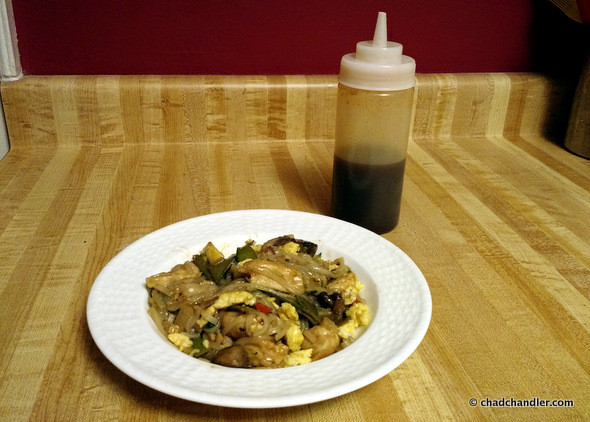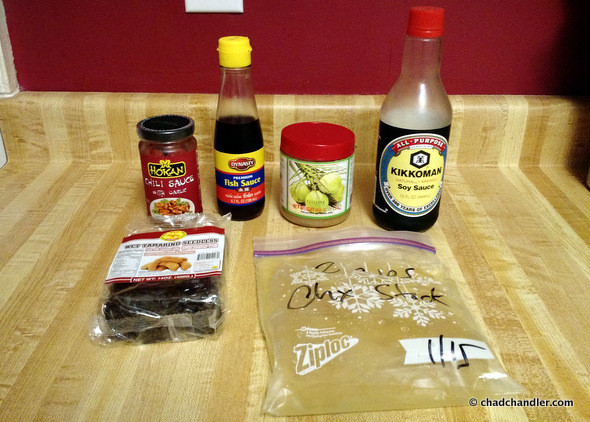
I know the title of this post doesn’t make a lot of sense. Stir-fry is stereotypically Chinese and adding Thai ingredients doesn’t change that. But foreign cultures group disparate foods together that they consider “American” (check out the Crown Crust Burger from Pizza Hut Middle East), so I’m going to do the same with pan-Asian foods.
I’ve been cooking a lot of Asian-inspired meals lately. My Asian market is now on my Saturday morning shopping circuit. It stems from my effort to make vegetables the star of the show and to relegate proteins to supporting-actor status. I’ve been making brothy soups, Chinese-American take-out fare, and all kinds of noodle dishes. What’s made this so successful in my house is the varying types of sauces I’ve learned to make.
Because of the surprising amount of sugar in Asian-American cuisine, most store-bought sauces are too sweet for my taste. Deconstructing these recipes and experimenting with them at home has shown me how to cut the sweetness and add some savoriness. I’ve hit upon a great version of a Pad Thai-inspired sauce that I like to toss with sautéed vegetables and noodles.
Thai-Style Stir Fry Sauce
- 3/4 cup chicken stock
- 1/2 cup palm sugar
- 1/2 cup fish sauce
- 1/4 cup tamarind paste
- 3 tablespoons soy sauce
- 1 tablespoon plus one teaspoonchili paste
- big pinch white pepper (to taste)
Here’s everything you need.

I’ve mentioned before that I keep several squirt and spray bottles in my fridge. This recipe makes enough sauce to fill a 16-ounce squirt bottle. Just pour everything into a nonstick skillet and simmer on low to break down the sugar and tamarind. Whisk occasionally combine the ingredients.

The tamarind paste won’t break down all the way, so strain the sauce through a fine mesh sieve and into a squirt bottle. Then use however much you want to dress up a stir fry. The sauce will keep for 2–3 weeks in the fridge.
If you can’t find tamarind paste (the peanut-like fruit of the tamarind tree), just substitute equal parts vinegar and fresh lime juice. If you can’t find palm sugar (sugar from coconuts), just substitute light brown sugar.
You can alter the ratios of these ingredients to suit your personal taste, but remember that the sauce should taste sweet, then salty, then hot, then sour. And the sauce should taste a little too strong by itself, which means that it will taste right when combined with bland rice or noodles.
I typically like to stir-fry my meats until mostly cooked, and then remove them to a plate. Next, I sear my vegetables until they’re mostly cooked. Finally I add my aromatics, sauce, meats, and noodles to the pan. I let it all simmer for a minute or two and then serve. It’s a very easy way to cook and it’s a good way to dress up a bunch of vegetables.






